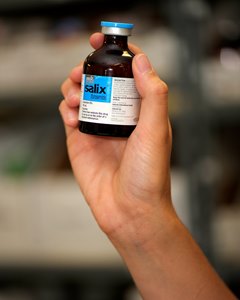NY Survey on Lasix Yields Low Response, Mixed Results


An informal survey of stakeholders in the New York horse racing industry about the race-day use of Lasix produced an underwhelming response and, among those who did give an opinion, the results were mixed.
The New York State Gaming Commission sent out a survey—with just three questions—to 140 industry players in the Thoroughbred and Standardbred industries in New York and only 17 responses came back, Robert Williams, the agency's executive director, told the commission's board July 22.
The idea for the survey came out of an April commission meeting. For some time the commission has been considering restrictions or bans on the race-day use of furosemide, known popularly as Lasix.
The survey's three questions were:
- Should non-Lasix races be allowed in the state?
- Should the drug be banned for 2-year-olds?
- Should there be a dosage reduction requirement?
The survey was sent, according to Williams, to 40 top trainers (by wins) at New York Racing Association tracks and Finger Lakes Racetrack, 40 top (by purses) Thoroughbred and Standardbred owners, organizations representing breeders and horsemen, the American Association of Equine Practitioners, the president, racing secretary, and chief veterinarian at every track in the state, and non-state stewards at tracks.
Of the 17 responses, 10 came from Thoroughbred interests.
On allowing non-Lasix races, nine of 15 that responded to that question said they are in favor.
On banning the drug's use for 2-year-olds, 11 of 16 respondents said yes. (Of the nine Thoroughbred stakeholders answering that question, eight were in favor.)
Whether Lasix dosage levels should be reduced, two supported the idea, four said maybe, and one said the issue still needs further study.
Where the Gaming Commission's board might be going with the Lasix issue is still an open question.
The board briefly discussed how to handle a trainer who, as Williams described it to the panel, "experiments" with stopping Lasix treatments in a horse that then goes on to bleed during a race. A rule change might be necessary, the executive director said, to address such situations, which under present rules could result in substantial down time for such a horse that bleeds.
The July 22 discussion by the regulators came after 20 tracks earlier this year, including those owned by Churchill Downs, The New York Racing Association, and The Stronach Group, agreed to phase out the use of Lasix in juvenile racing in 2020, which would then be followed by a ban in listed and graded stakes races in 2021.
